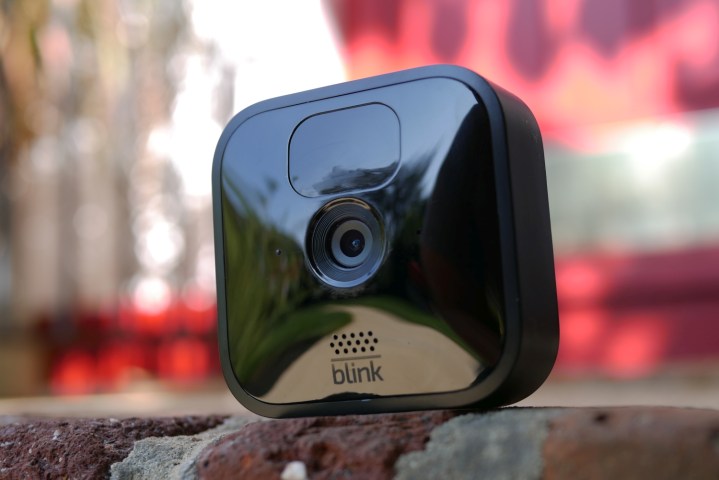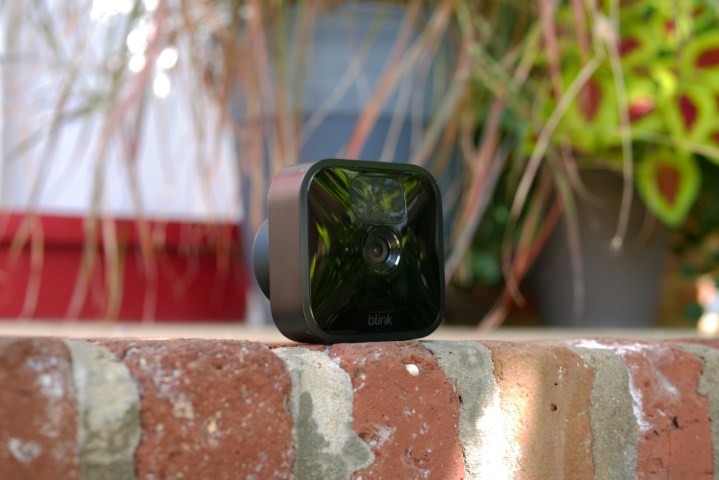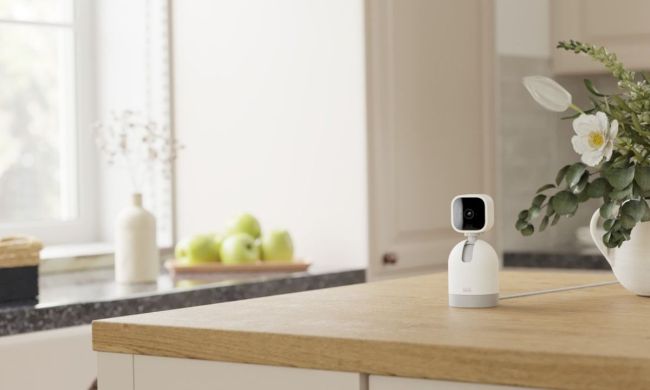For security and peace of mind around your home, a Blink Outdoor Camera is one of the most popular choices for keeping an eye on your property. The outdoor cameras have features like motion detection, a Live View which lets you see what is going on at your property right from your smartphone, and an Activity Zones option that lets you choose which areas of your property you want to record — which is handy if you live near a busy street where cars could constantly set off annoying motion detection notifications. The recently released Blink Outdoor 4 has improved on these features to make them even better than the previous Blink Outdoor 3.
Like most home security systems, Blink operates on a subscription plan, with a monthly charge starting at $3 to use the service. But if you don’t want to pay for the charge, you might want to try using the cameras without the subscription — though there will be some severe limitations if you do.
Does the Blink Outdoor Camera require a subscription to use?

Technically, no. You still have access to a number of Blink Outdoor Camera features without paying any subscription fee. These include the ability to save motion alerts, access two-way audio, and watch live feeds. That compares quite well against other home security subscriptions, many of which disable alerts if you don’t pay ongoing fees.
However, you won’t be able to save any video clips, and that’s a key feature for security cams. Saving video clips allows you to spot porch pirates you may have missed, see who is scouting out your yard, and if worse comes to worst, show footage to the police or an attorney to take further action. Recording video is the feature you need for serious home monitoring, so it’s hard to say goodbye to it.
You’re also limited to just five-minute Live View sessions — which isn’t ideal for most homeowners — and lose out on cool features like Person Detection and video sharing.
How does video storage work with the Blink Outdoor Cam?
Here, things get a little complicated. Let’s break it down by options based on the two plans.
Blink Basic Plan: For $3 a month, the plan adds active video recording to the cloud for one device. If you only plan on having a single Blink cam, that’s a pretty good price for cloud storage. Although, keep in mind that some options like the latest Nest Video Doorbell offer it for free. Cloud video clips will last for 60 days, then they are permanently deleted. The Basic Plan also adds a backup option using a Sync Module 2 hub, a Blink accessory for managing security data. Attach and configure a USB drive to the Sync Module 2, and it will back up eligible clips saved in the cloud to the USB drive, so you can keep them permanently.
Blink Plus Plan: This plan costs $10 per month, and basically does the same thing as the Basic plan, except you can have unlimited devices, so you can use more than one Outdoor Camera if you want. It also adds a discount for purchasing Blink devices in the future, and an extended warranty. Video storage still lasts for 60 days, and you still get an option to automatically back up your cloud clips on a USB drive if you have the Sync Module 2.
You’ll also gain access to the Custom Snooze feature, letting you pause motion alerts for up to 24 hours (which may come in handy if you have contractors working in your home or if you’re throwing a party, both of which could trigger dozens of alerts in a matter of minutes).
Does the Blink Outdoor Camera have local storage?

For those who don’t want subscriptions, many security cameras come with a local storage option where you can insert an SD card, USB drive, or something similar to store capture footage. It requires a lot more manual work to monitor and clear than cloud storage, but you don’t have to pay any fees.
The Blink Outdoor Camera takes a slightly different approach. That Sync Module 2 hub we talked about? It can also support purely local storage with the right configuration, which allows you to store video without a subscription.
How can I use the Blink Outdoor Cam with local storage?
First, purchase a Blink Sync Module 2. They are available for a one-time fee of $35. Connect it with the Blink app, along with your Blink Outdoor Camera.
Insert a configured USB drive into the module with plenty of space. If your USB drive isn’t recognized, the Blink app should prompt you to add it.
Now, clips from the camera should be automatically added to your USB drive as they are picked up. The really good news is that you can monitor all your recorded video directly from the Blink app, which makes management a lot easier. You cannot record live video feeds as you are watching them (not without a plan), but this is the only major limitation.
And that makes sure I don’t have to pay any ongoing fees?
Yes. Just make sure to keep your Outdoor Camera and the Sync Module 2 updated through the Blink app when necessary. If you buy future security cameras from Blink, you may also need to upgrade your Sync Module to ensure this method still works.
What happens when the Blink free trial ends?
When you go to register for a Blink subscription, you’ll typically get an offer for a 7-day free trial version of the Plus Plan software. You can use this software for your indoor and outdoor cameras, with full access to all the software options to see whether the subscription is worth it for you. There should be a banner which appears to offer you the free trail whenever you set up a new device or if you already had a free trial but it ended more than 10 weeks ago. You can hit the Start Free Trial option to get your seven free days without being charged.
During the trial you’ll see a banner at the top of your home screen which tells you how many days your have left on the trial. You’ll also get an email with information about your trial coming to an end, with an option to sign up for a subscription plan.
If you’re part way through your trial period and you decide you don’t want the service, then you can cancel it and you won’t be charged for Plus and will revert to your Basic Plan. Or if you let the trial expire, then you won’t be charged either (which makes a nice change from many subscription services!) If you don’t sign up for the Plus subscription then you’ll lose access to features like live view recording, 60 day video history, and photo capture. But you will be able to continue to use Basic features like motion-activated notifications and live view streaming. It’s important to note that once the Plus trial expires, your device won’t save any more recordings to the cloud and your existing cloud recordings may be deleted based on your settings.
A useful note is that if you buy more Blink devices and add them to your account, you can get another seven days of free Plus trial for each device, up to a maximum of 30 days.



